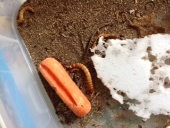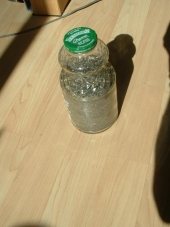posted 6 years ago
OK this idea maybe pretty useless.
Clearly, bone to fertilizer up-cycling occurs on a large scale, and a house hold scale, but I was looking at it at side hustle scale, which needs more than a meals worth of bones and less than some reoccurring massive amount.
But the waste from chicken restaurants intrigues me.
I see napkins, and chicken bones and I think fertilizer.
The plastic straws, lids , containers and utensils are the fly in the ointment.
I wish there were a plastic magnet, or at lest a chick-en magnet, but alas.
I have considered the sorting powers of water, chickens and high powered fans, but I really have no good ideas.
Nicer restaurants would have less plastic, but also fewer bones, and better dumpster security.
Anyplace that you had a deal with would reasonably expect regular pick ups.
So there is not much here, in terms of ideas, just a vague wish to convert one waste stream into a phosphorus rich fertilizer.
One more idea.
Aggressive vermicomposting.
Feed the unsorted mess of waste to superworms or hissing cockroaches.
Eventually, you have insects, insect frass and the indigestible plastic.
At that point, using air to winnow out the good stuf(the poop and the insects)would be more feasible.






